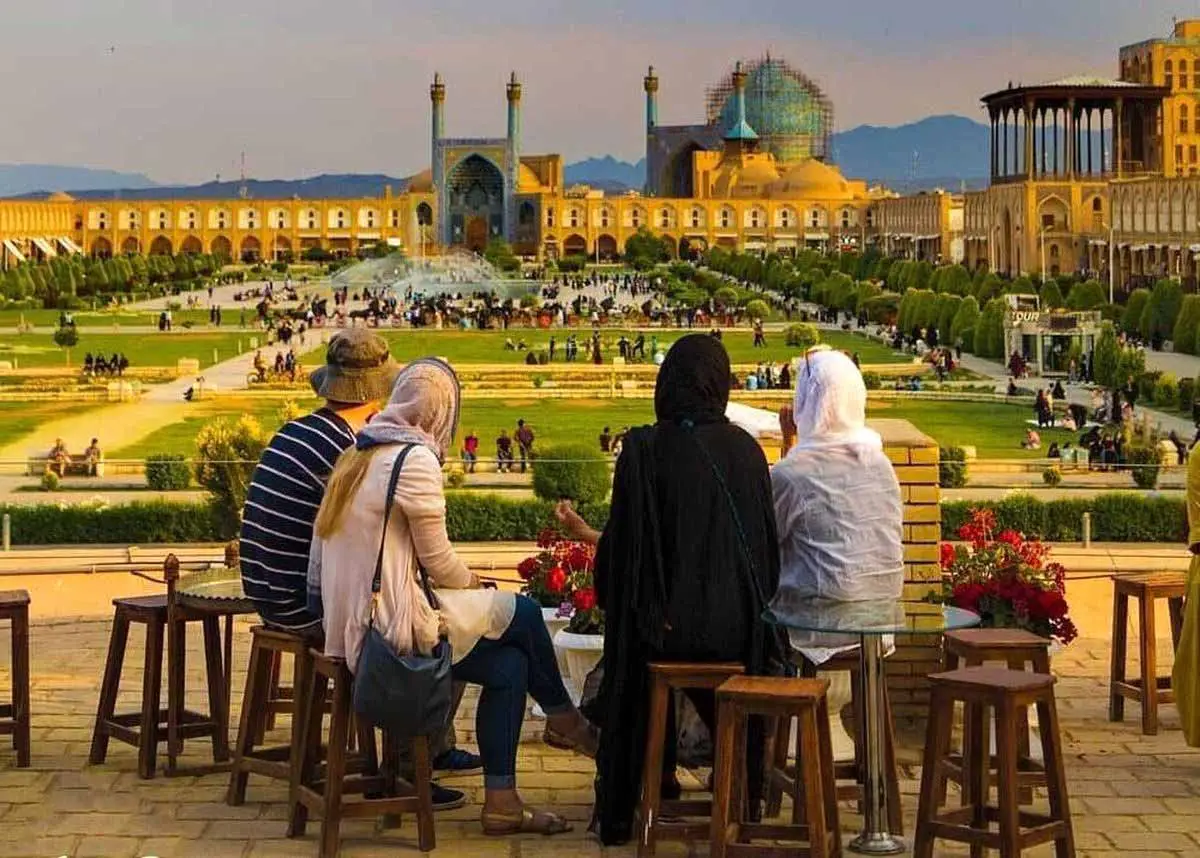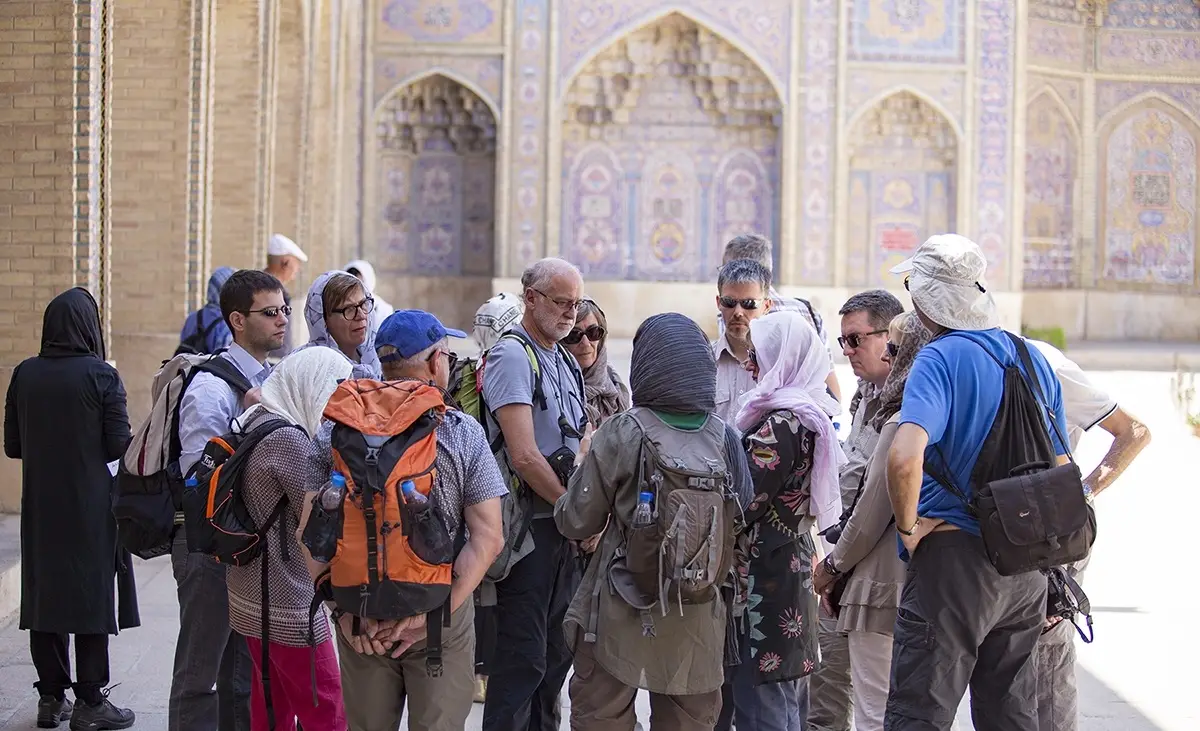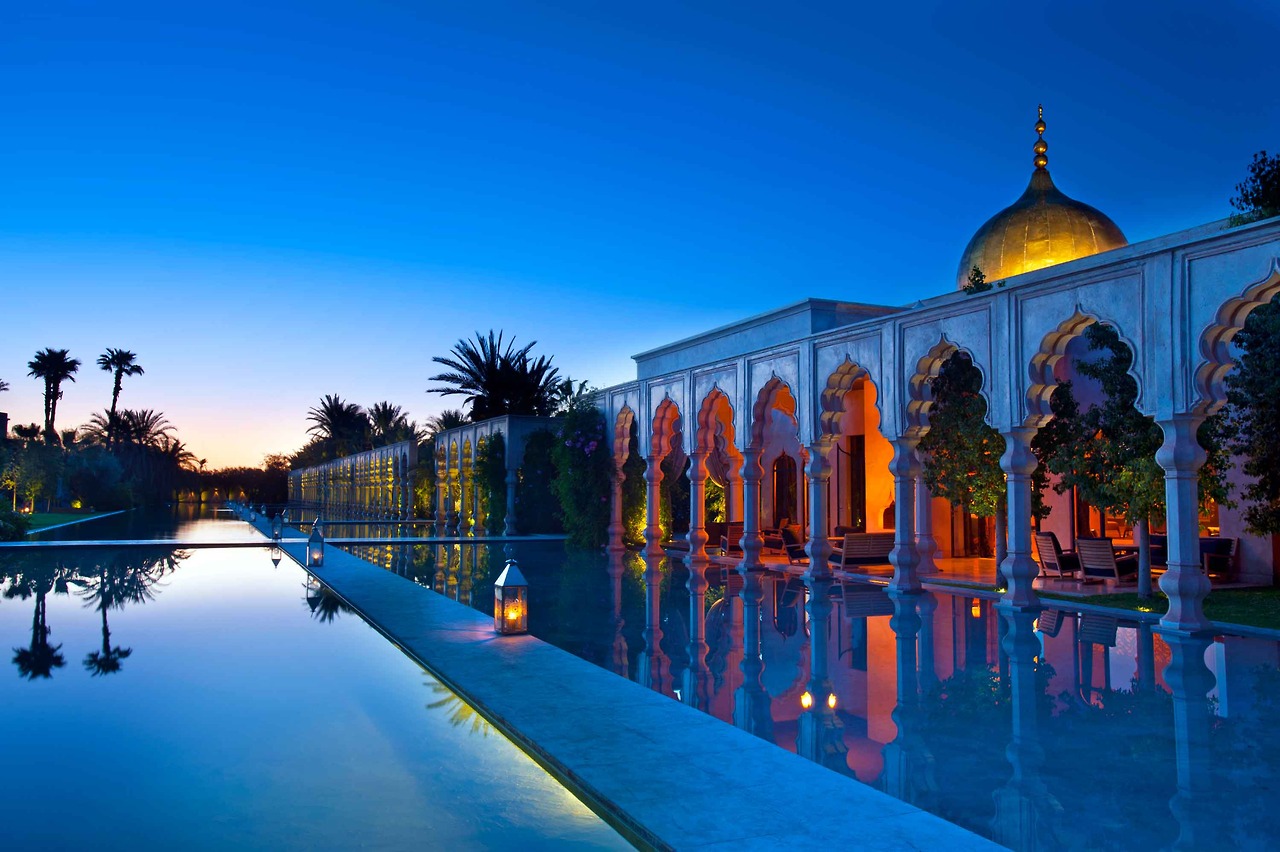Iran, a land of diverse landscapes and rich cultural heritage, offers various natural and historical attractions for every type of traveler. From towering mountains and enchanting forests to unique geological sites and sprawling deserts, Iran promises an unforgettable journey. With 27 UNESCO World Heritage sites, it ranks as the 10th country globally with the most cultural heritage sites. In this blog post, we explore tourism information in Iran.
4.16 Million International Tourists in One Year
In 2024, Iran welcomed around 4.16 million foreign tourists, showing a 24% increase compared to the same period in the previous year. This growth has brought Iran closer to its highest tourism record, which was set in 2019 when 8.8 million international tourists visited the country. That year was the last before the COVID-19 pandemic changed global travel patterns.

After the pandemic, international travel slowly started to recover, and Iran, like many other countries, has been working to attract more visitors again. The growth in tourist numbers is also influenced by regional conditions—for many travelers in nearby countries, Iran offers easy access, affordable healthcare, strong cultural connections, and visa-free or visa-on-arrival options. While some areas in the region have seen instability, Iran remains a peaceful and welcoming destination for tourists who want to explore its rich history, natural beauty, and traditional hospitality.
The recent increase in tourist arrivals shows that more people are once again choosing Iran as a travel destination, and the country is preparing for even more visitors in the coming seasons.
Hospitality at Its Best: 90% Hotel Occupancy
Iran’s tourism sector has shown remarkable resilience. During the 2023 Nowruz celebrations, there was a significant surge in travel, reflecting the pent-up demand. This momentum continued into 2024, with hotel and accommodation centers witnessing an unprecedented 90% occupancy rate. Museums, historical sites, and recreational facilities also saw substantial activity, maintaining an average occupancy above 80%. This high occupancy rate indicates a thriving tourism sector ready to welcome visitors.

What Travelers Look For: Authentic Experiences
When you think about traveling to Iran, there are certain things that most travelers want to know or experience. It’s important to have clear expectations and practical advice before you go. Here’s what you should know about Iran from the perspective of international tourists.
Beautiful Historical Sites and Ancient Wonders
Iran is home to many ancient cities and historical sites that draw people from around the world. You’ll find stunning architectural wonders like Persepolis, the ancient capital of the Persian Empire. It’s a UNESCO World Heritage site and a must-visit if you want to experience Iran’s rich history. You can also explore Isfahan’s beautiful mosques, like the Shah Mosque, or the old bridges and palaces that tell the story of a time long past. In addition to this, cities like Shiraz, Yazd, and Kashan offer unique glimpses into Persian history, culture, and architecture. Iran’s historical significance is clear in these locations, and you’ll have the chance to see how ancient cultures shaped the world today.
Warm and Hospitable People
One of the most wonderful things about Iran is the hospitality of its people. Iranians are known for being friendly and welcoming to tourists. When you visit, you’ll likely experience the kindness of locals who go out of their way to help you. Whether you’re lost, need directions, or just want to talk to someone, people in Iran are often more than happy to assist you. In many cases, you’ll be invited to have tea or a meal with strangers. The warmth and kindness you’ll experience make Iran an incredible place to visit.
The Food: Rich, Flavorful, and Unique
Iranian food is diverse, flavorful, and something that will make your trip memorable. You can try dishes like kebabs, stews, and rice, which are often seasoned with saffron and other herbs. You’ll find different regional foods throughout the country, each with its unique twist. For instance, in the north, you can try seafood dishes, while in the south, you’ll experience spicy stews and dishes made with fresh vegetables. Don’t forget about the famous Iranian sweets, like baklava and saffron ice cream. If you’re a food lover, Iran is a destination that will excite your taste buds.
Cultural and Religious Heritage
Iran is a country rich in cultural and religious diversity. If you’re interested in learning about different cultures, Iran provides plenty of opportunities. You’ll find a mix of Shia Islam, Zoroastrianism, and other religions that have shaped the nation over thousands of years. You can visit beautiful mosques, such as the Nasir al-Mulk Mosque in Shiraz, which is known for its colorful stained-glass windows. You can also explore sites like the Zoroastrian fire temples and the ancient ruins of Persepolis. Iran’s religious sites are an important part of its cultural fabric, and experiencing these places will give you a deeper understanding of the country’s heritage.
Scenic Landscapes and Outdoor Adventures
Iran is a country of diverse landscapes, from deserts to mountains and lush green forests. If you enjoy outdoor activities like hiking, trekking, or skiing, Iran is a great destination. You can explore the Alborz mountain range, which offers opportunities for skiing in the winter or hiking in the summer. If you’re interested in desert landscapes, head to the Dasht-e Kavir desert for a unique experience. There are also beautiful coastal areas along the Caspian Sea, where you can enjoy the mild climate and relaxing beaches. No matter your interests, Iran offers a wide range of natural beauty that will appeal to adventure lovers.
The Importance of Transportation and Convenience
When it comes to traveling around Iran, it’s important to consider how you’ll get from one place to another. Iran has an extensive transportation system, including trains, buses, and flights that connect most major cities. Trains are a popular option for longer trips, offering comfort and the chance to enjoy the scenic views as you travel. If you’re in Tehran, the capital, you’ll also find an efficient metro system that can take you to most major landmarks and attractions. For shorter trips, taxis or ride-hailing apps like Snapp and Tap30 are commonly used. It’s always a good idea to have a local SIM card, such as the “Visit Our Iran SIM card,” which will make it easier for you to use apps and stay connected during your trip.
Budget-Friendly Travel
Another factor that draws travelers to Iran is the affordability of visiting the country. Compared to many other destinations, Iran offers great value for money. Accommodation, food, and transportation are reasonably priced, and you can experience a lot without spending a fortune. Whether you’re staying in a budget hotel or a luxury hotel, the cost of living in Iran is relatively low, which means you can enjoy your time in the country without breaking the bank. You can also find local markets selling everything from souvenirs to fresh produce at prices that are much lower than you might find in other countries.
Modern Amenities with a Traditional Feel
Despite being known for its ancient history, Iran also offers modern amenities in major cities. While you can explore the old quarters of cities like Tehran, Isfahan, and Shiraz, you’ll also find modern shopping malls, international brands, and luxurious hotels. Iran strikes a balance between old and new, offering a blend of traditional culture and modern conveniences. This mix makes it an interesting place for travelers who want to experience both sides of the country’s lifestyle.
Safety and Practical Considerations
When traveling to Iran, many tourists are concerned about safety, but Iran is generally considered a safe country for travelers. Of course, like traveling anywhere, it’s always good to take basic precautions. It’s wise to be aware of your surroundings and follow local customs and rules. Iranians are very respectful of their guests and will appreciate it if you are respectful of their culture in return. Women should be aware of the dress code, including wearing a hijab in public places, but locals are often very understanding of tourists’ unfamiliarity with local customs. Be sure to check the latest travel advice and local guidelines before you visit, so you are well-prepared.
Top Cities and Attractions Visited in Iran
Last year, tourists flocked to Iran’s most captivating destinations, eager to explore its rich history, vibrant culture, and breathtaking landscapes. History lovers were drawn to iconic sites like Persepolis, the ancient capital of the Achaemenid Empire, and the Pink Mosque (Nasir Ol Molk Mosque) in Shiraz, renowned for its stunning stained glass windows. They wandered through the historic Fahadan neighborhood in Yazd, where ancient windcatchers whispered tales of bygone eras. In Isfahan, visitors marveled at the grandeur of Naqsh-e Jahan Square and its surrounding monuments, including the Imam Mosque and Ali Qapu Palace. Meanwhile, in Tehran, the opulent Golestan and Sa’dabad Palaces offered a glimpse into Iran’s regal past.

Exploring Iran’s rich culture, tourists explored enchanting spots like Si-O-Se Pol in Isfahan and Tabiat Bridge in Tehran, immersing themselves in the vibrant ambiance. They paid homage to literary giants at the Tomb of Hafez in Shiraz and the Tomb of Sa’adi, where the timeless words of Persian poets echoed through the ages. In Tehran, they experienced the pulse of contemporary Iranian life at Bam-E Tehran, while in Yazd, they admired the intricate beauty of Amir Chakhmaq Square.
Beyond these cities, Iran has many other fascinating locations. In Kerman, tourists visit the Ganjali Khan Complex, a beautiful example of Safavid architecture, and the nearby Shahdad Desert for an unforgettable desert experience. The ancient city of Tabriz is famous for its Blue Mosque and the Grand Bazaar, a place where you can immerse yourself in the local culture. Mashhad, home to the sacred Imam Reza Shrine, attracts many pilgrims and visitors interested in Iran’s religious heritage. For nature lovers, Kurdistan offers stunning landscapes and the peaceful Uraman Takht village, known for its terraced hills and traditional Kurdish culture. Finally, Qeshm Island in the Persian Gulf offers stunning beaches, mangrove forests, and the mysterious Hara Forests.
For more inspiration on what to see and do in Iran, take a look at our article: Iran’s Most Loved Attractions and Destinations: 13 Travelers Tell Us about the Destinations They Most Enjoyed on Their Journey.
Who’s Visiting Iran?
Most of the visitors came from neighboring countries. According to official data from the Statistical Center of Iran, the largest group of tourists came from Iraq, with over 2.2 million people entering the country. Next were travelers from Afghanistan with 967,000, followed by Turkey with 411,000. These numbers show that regional travel is still the main source of foreign tourism for Iran.
If you’re planning to visit Iran, you’ll notice that most international tourists arrive by land, especially those from nearby countries. Some travelers use air travel, but land borders are more active, likely because they are more affordable and easier to access for people in the region.

What Is Iran Most Popular For?
Iran is most famous for its ancient historical sites, stunning architecture, and rich Persian culture. One of the country’s biggest attractions is the ancient city of Persepolis, a UNESCO World Heritage site that offers a glimpse into the grandeur of the Achaemenid Empire. Iran is also renowned for its Islamic architecture, particularly the Nasir Ol Molk Mosque in Shiraz and the majestic Imam Mosque in Isfahan. Another highlight is the beautiful Persian gardens, such as Fin Garden in Kashan, which offer a peaceful escape amidst the country’s natural beauty. Iran is also known for its cuisine, including dishes like kebab, fesenjan, and ash reshteh, as well as the sweet flavors of saffron and pistachios. Lastly, many visitors come to Iran for the hospitality and warm welcome of the Iranian people, making it a memorable destination for travelers.
What Is Tourism Like in Iran? A Practical Guide for Tourists
If you’re thinking about visiting Iran, you’ll find it offers a rich experience with its history, diverse cultures, and beautiful landscapes. Iran is considered safe for tourists, with a low crime rate and helpful locals. While it’s important to follow local customs, such as the dress code, you can feel secure exploring the country.
- Rich Experience: Iran offers a unique experience with its history, diverse cultures, and stunning landscapes.
- Safety: Iran is considered safe for tourists, with a low crime rate and friendly locals. Following local customs, like the dress code, ensures a respectful and secure experience.
- Hygiene: Cities like Tehran, Shiraz, and Isfahan maintain high hygiene standards in hotels, restaurants, and tourist sites. Street food is safe when vendors follow good practices.
- Hospitality: Iranians are known for their warmth, often inviting tourists for tea or a meal, providing a chance for meaningful cultural exchanges.
- Transportation: Getting around is easy with good public transportation in cities, along with ride-hailing apps like Snapp. For longer distances, trains and flights are available.
- Affordability: Iran is an affordable destination, with lower costs for accommodations, meals, and attractions compared to many other countries.
- Modern Amenities: Major cities offer modern facilities like shopping malls, high-speed internet, and international restaurants, ensuring a comfortable stay.
With a little preparation, you’ll find Iran to be a safe, welcoming, and memorable destination.
Iran Travel Rating: What You Should Know About Safety
The current travel rating for Iran is Level 4 from the US Department of State and the UK Foreign, Commonwealth & Development Office (FCDO). However, it’s important to understand that these advisories are often general and may not always reflect the experience of most tourists, especially in areas where tourism is common. For more details on safety, check out our article: Why Iran Is a Safe Destination for International Travelers: Dispelling Misconceptions.
In reality, Iran remains a safe destination for many travelers who follow local guidelines and stay in well-known tourist areas like Tehran, Shiraz, Isfahan, and Yazd. The people of Iran are known for their hospitality and are generally very welcoming to visitors. Most issues noted in travel advisories tend to be in specific regions or areas not typically visited by tourists. As long as you plan ahead, respect local customs (such as dress codes), and stay informed about current events, you’ll likely have a positive and safe experience.
Make sure you’re familiar with local customs by reading: Complete Guide to the Dress Code in Iran.
Final Word
Iran boasts diverse landscapes, rich cultural heritage, and welcoming hospitality, offering natural and historical attractions for every traveler. With 27 UNESCO World Heritage sites and a resurgence in tourism, Iran is one of the most captivating destinations globally. Whether you’re drawn to the ancient wonders of Persepolis and the Pink Mosque or eager to explore the vibrant culture of cities like Isfahan and Tehran, Iran promises an unforgettable journey filled with authentic experiences. So why wait? Explore Iran with Visit Our Iran and plan an adventure of a lifetime. Contact us today to start planning your next trip to this captivating destination.
